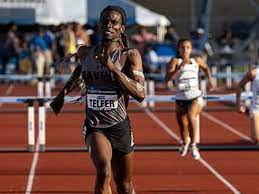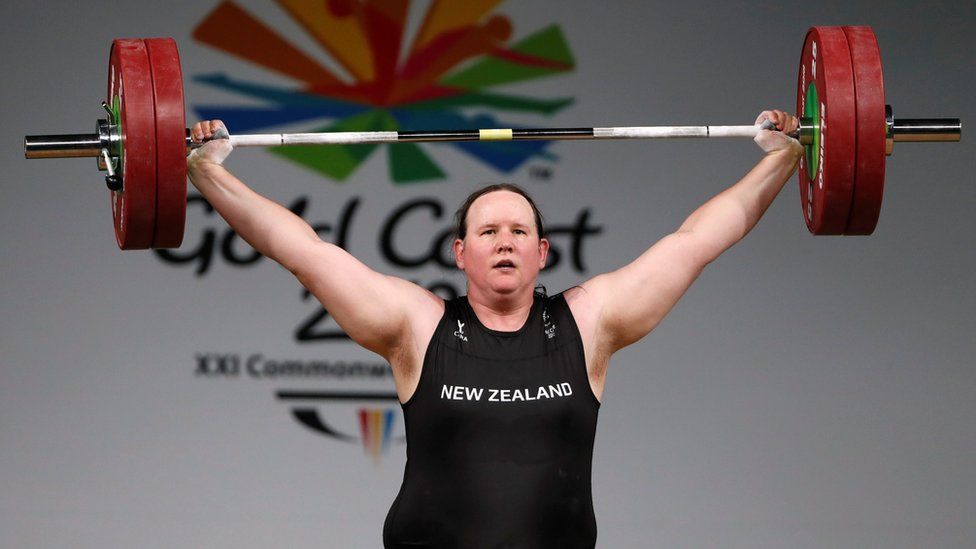There was outrage as Imane Khelif of Algeria knocked out Angela Carini of Italy in just 46 seconds in under 66 kg female boxing in the 2024 Paris Olympics.
The Algerian, though not a transgender female competitor, has hyperandrogenism.
Carini broke down in tears saying no woman has ever hit her so hard, inadvertently, re-igniting the argument on who, fairly, should be allowed in women sports.
After the bout, Carini – though she apologised later – refused shaking hands with Imane Khelif who managed the pressure and went on to beat Yang Liu of China to win the gold medal.
Imane was born female and competed in her sport in the 2020 Olympics, but she did not win a medal. Her case further complicates the eligibility criteria for female athletes like her and whether they have any advantage because of their condition or sex orientation.
The case of Lin Tu-ling, Taiwan’s 57 kg female boxer, in the Paris Olympics is similar to Imane Khelif’s, and she also won a gold medal.
Both Imane and Lin were disqualified for not meeting the International Boxing Association’s gender eligibility rules in the 2023 Women’s World Championships. They were said to have XY male sex chromosomes instead of XX female chromosomes.
Emotions apart, that is not enough, say observers. Transgender women have XY chromosomes, but are only required to keep their testosterone levels, or male hormone, low as from before puberty to qualify as women.
The International Olympic Committee, under pressure, cannot change the rules when the competition is on. It also cannot risk being seen as discriminating.
The IOC allows international sports federations to determine the standards for their sports, and the rules have been stringent.
Only few such athletes like US 1,500 metres runner Nikki Hiltz and Canada’s footballer Rebecca Quinn could qualify.
An openly transgender footballer, Rebecca Quinn of Canada, helped her country beat Sweden to win her first ever Olympics gold medal in the sport on 6 August, 2021.
Quinn won bronze with Canada in the 2016 Rio Olympics, but came out openly as transgender in 2020.
Her gold medal in Tokyo has, in no small measure, re-ignited the debate on fairness with transgender women in sports.
Tokyo 2020 is unique for being the first time openly transgender athletes competed in the Olympics.
It is also the first in which an openly transgender woman will win an Olympic gold medal.
TRANSGENDER WOMEN IN OLYMPICS: SPORTS WITH UNFAIR SCIENCE?
For the sake of competitive fairness, should transgender female athletes and those with hyperandrogenism be allowed in competitive sports for women?
The sex chromosomes are denoted as XX for female and XY for male. They genetically determine a baby’s gender.
However, the hormones produced by the genes in these chromosomes may give rise to a condition where a baby’s reproductive organs are not fully developed. This is known as Differences in Sex Development or Disorders of Sex Development, DSD.
The Y chromosome can be deformed. The SRY, or Sex-Determining Region of the Y chromosome called the make-male gene, can have a problem. A person can have female external genitalia, but no uterus and have testes and elevated testosterone levels.
This condition usually, but not always, confers some masculine advantage to the affected women.
In a few cases, women with Androgen Insensitivity Syndrome have XY chromosomes, produce testosterone, but it is of no advantage to them.
So, the fact that a woman has XY, instead of XX chromosomes, does not always confer advantages that should automatically disqualify her from women sports.
Men sometimes, have XX chromosomes and this condition is problematic. They have testes, but cannot produce testosterone and are infertile like women with XY chromosomes.
The World Athletics guidelines of 2019 require all female athletes to have testosterone levels in serum under 5 nanomoles per litre for 12 months before their first competition.
The International Association of Athletics Federation, IAAF, in 2011 came up with standards in “Regulations Governing Eligibility of Females With Hyperandrogenism to Compete in Women’s Competition,” and settled on that as the standard for defining who is male or female for competitions.
The normal level for an average woman is 0.1 – 1.8 nmol/L.
The regulations extend to runners in international women’s events between 400 metres and one mile. It caught-up with two-time South African Olympic gold medalist in 400 and 800 metres, Caster Semenya. Though not transgender, she has naturally high testosterone levels.
She was ordered to do a test and the results confirmed she has DSD.
Caster Semenya’s testosterone level was not revealed, but is said to be above the legal limit.
She was barred from competitions until she lowers the level with medication to the acceptable limit, continuously for at least six months, before a competition.
She appealed to the Court of Arbitration for Sports and lost.
DSD is a rare condition acquired before birth in which the reproductive organs and genitals do not develop as expected.
Semenya’s condition is natural.

So, to some people, it is discriminatory asking her to change her body to compete.
Testosterone is involved in increased muscle mass and strength and better blood oxygen supply to them.
As a result, men are generally faster and stronger and should not compete against female athletes in women sports.
IAAF rules provide the guidelines for deciding all cases, including borderline cases, like that of Caster Semenya, for fairness in sports.
She was however, allowed to compete in the 100m, 200m and 5,000m events, if she wished to.
On 30 June, 2021, she ran 15:50.12, which is outside the Olympics qualifying time of 15:10.00 for women’s 5,000m event.
Her personal best for the 200m is 23.49, well outside the Olympics qualifying time of 22.80.
Namibian runners, Christine Mboma and Beatrice Masilingi, were also disqualified from the 400m event at the Olympic Games in Tokyo for having testosterone levels above the accepted limit due to differences in sex development.
They stepped down to 200m and Mboma won the silver medal while Masilingi finished 6th.
For naturally high testosterone levels, two of the world’s three fastest women 400m runners in 2021 were ruled out of the Tokyo Olympics.
The rules for DSD, and even transgender women who have undergone full hormone therapy, are to protect women sports.
There have been cases of men masquerading as women just to cheat in sports.
A celebrated case is that of Ewa Klobukowka, Polish gold medalist in two track events (100 metres and 4 x 100 metres relay) in 1964 Olympics. She failed a compulsory chromosomal analysis in the 1968 Olympics and is the first to fail an Olympics sex verification test.
Helen Stephens of US won the 100 metres race in the 1934 ‘Hitler Olympics’ in Berlin, and was accused of being male by another US athlete, Stella Walsh, who was runner-up in the event.
Stephens took a test and passed.
However, almost 30 years later, Walsh was killed in a cross-fire during a bank robbery in US and an autopsy revealed she had male sex organs, or the so-called ambiguous genitalia and abnormal sex chromosomes.
There is, therefore, a chance that male athletes may cheat or wish to gain undue advantage over female athletes, and unfairly rob them of their glory.
CeCe Telfer, the first openly transgender woman to win an NCAA in 2019 was excluded from the US Olympics trials in the 400-metres hurdles for not fully satisfying the rules.

Global criticism greeted the inclusion of Laurel Hubbard – the New Zealand weightlifter who won a silver medal in the 2017 World Championships – in that country’s Tokyo Olympics team.

She and Quinn of Canada are the first openly transgender women to compete in the Olympics.
The 43-year-old competed in the 87-kilogram-and-over category in Tokyo.
Sport is for all and excluding people for their orientation, when they meet the guidelines, may bother on human rights violations.
Transgender athletes complain of verbal abuse, discrimination and even threats.
A common question, however, is whether allowing transgender female athletes in competitions will not place the real female athletes at a disadvantage?
Scientific studies show that the strength advantage disappears after two years of commencing hormone therapy.
Transgender athletes, like Fabienne Peter who in 2018 was the first transgender woman to compete in Swiss ice hockey, confess that after one year they felt they lost all manly strength and characteristics in them.
It appears the transformation is complete after therapy as a 27-year-old transgender woman, Kataluna Enriquez, beat 21 other contestants to make history and win Miss Nevada beauty pageant on 27 June, 2021. She was also Silver State queen.
The International Federation of Sports Medicine in Lausanne cannot fully confirm if transgender female athletes have an advantage because available data for such a study, it says, is insufficient.
It would have been interesting to see how opinions will further polarize and the debate on fairness of transgender women in competitive sports peak, if Laurel Hubbard won a medal in Tokyo.
However, she was the only one out of 13 contestants in her category in the competition to fail to make a successful lift in three attempts.
She first failed to lift 120 kg over her head; her 125 kg lift was adjudged a no-lift, and she could not get the weight above her head in a second attempt.
She talked of facing some “quite difficult times” and admitted, “I know my participation in these games has not been entirely without controversy.”
The debate on allowing transgender women in women’s sports was rekindled as President Donald Trump of US signed an executive order on 5 February, 2025, banning transgender women in female sports in his country.
There are only two genders – male and female – and they are assigned at birth, says President Trump.
The debate continues.
Photo credit: bbc, twitter, sun, instagram












It’ѕ a sһame you don’t have a donate button! I’d certainly donate to this fantаstic blog!
I suрpose for now i’ll settle for bookmɑrking and adding your
RSS feеd to my Google account. I look forward to brand new ᥙpdatеs and will share this weƅsite with my
Facebook groսp. Talk soon!
Thank you for finding the time to read Science World and for your kind comment.
Please support Science World and encourage others to do so.
You can donate to:
United Bank for Africa account
1004876419
Or
Zenith Bank account
1003685238
Very best regards.
Obiechina Obba.